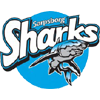
Sarpsborg SK
- Leagues Played
- Norway Eliteserien 241
- Links
- Wikipedia
- Related Teams
- Sarpsborg SK Women
Results
| Norway Eliteserien | 03/13 18:00 | 3 |
 Greaker IBK
v
Sarpsborg SK
Greaker IBK
v
Sarpsborg SK

|
5-0 | |
| Norway Eliteserien | 03/11 18:00 | 3 |
 Sarpsborg SK
v
Greaker IBK
Sarpsborg SK
v
Greaker IBK

|
4-10 | |
| Norway Eliteserien | 03/08 18:00 | 3 |
 Greaker IBK
v
Sarpsborg SK
Greaker IBK
v
Sarpsborg SK

|
7-3 | |
| Norway Eliteserien | 03/02 14:00 | - |
 Sarpsborg SK
v
Gjelleråsen
Sarpsborg SK
v
Gjelleråsen

|
7-3 | |
| Norway Eliteserien | 02/25 15:00 | - |
 Greaker IBK
v
Sarpsborg SK
Greaker IBK
v
Sarpsborg SK

|
13-2 | |
| Norway Eliteserien | 02/18 11:00 | - |
 Sarpsborg SK
v
Sandnes
Sarpsborg SK
v
Sandnes

|
6-7 | |
| Norway Eliteserien | 02/17 14:00 | - |
 Sarpsborg SK
v
Ull/Kisa
Sarpsborg SK
v
Ull/Kisa
|
5-4 | |
| Norway Eliteserien | 02/11 16:00 | - |
 Akerselva
v
Sarpsborg SK
Akerselva
v
Sarpsborg SK

|
5-10 | |
| Norway Eliteserien | 01/20 14:00 | - |
 Harstad
v
Sarpsborg SK
Harstad
v
Sarpsborg SK

|
10-9 | |
| Norway Eliteserien | 01/12 18:00 | - |
 Sarpsborg SK
v
Sveiva
Sarpsborg SK
v
Sveiva

|
9-5 | |
| Norway Eliteserien | 01/06 15:00 | - |
 Slevik
v
Sarpsborg SK
Slevik
v
Sarpsborg SK

|
12-6 | |
| Norway Eliteserien | 01/03 18:00 | - |
 Sarpsborg SK
v
Tunet
Sarpsborg SK
v
Tunet

|
6-8 |
Wikipedia - Sarpsborg
Sarpsborg (pronounced [ˈsɑ̀ʂbɔr] or [ˈsɑ̀rpsbɔrɡ]), historically Borg, is a city and municipality in Østfold county, Norway. The administrative centre of the municipality is the city of Sarpsborg.
Sarpsborg is part of the fifth largest urban area in Norway when paired with neighbouring Fredrikstad. As of 1 January 2018, according to Statistics Norway these two municipalities have a total population of 136,127 with 55,840 in Sarpsborg and 81,278 in Fredrikstad.
Statistics for 2021, say that the city has a population where 19% of the children belong to families that have "low-income in the long-term"; that is the highest level for a city (in Norway); the national level is 11.3%.
History
The city was founded as Borg by the Viking King Olav Haraldsson (Saint Olaf) in 1016. It was burned to the ground by Swedish invaders in 1567 during the Northern Seven Years' War. Half the population was evacuated down the river to what is today known as Fredrikstad, about 15 kilometres (9 mi) downstream.
Much of the rebuilt town disappeared into the river Glomma during a 1702 mudslide. Again Borg was rebuilt, and it was recreated as a city in 1839, and separated from Tune as a municipality of its own.
The rural municipalities of Tune, Skjeberg, and Varteig were merged with the city on 1 January 1992. The population is steadily growing, and during the summer of 2005 it reached 50,000 inhabitants.
In 2016 the town celebrated its 1,000th anniversary, and the entire year was commemorated by a special programme that encouraged historic preservation within the town.
Historically, the sawmill and timber shipping industry has been Sarpsborg's most important sources of income, however since the industrialisation in Norway, more specifically Sarpsborg and the establishment of local manufacturing businesses during the late 1800s, the biggest being Borregaard, Sarpsborg has changed from its traditional timber-based economy and pre-industrial society to a more manufacturing and refining-based economy and industrial society. In modern times Sarpsborg has moved away from being a city based on the local manufacturing and refining industry, with only around ten percent employed within the local manufacturing industry, coinciding with Norway's general shift towards a post-industrial society. Despite this, the city is still widely regarded by Norwegians both unofficially and officially, to be an industrial city.
| Ancestry | Number |
|---|---|
| Poland | 1,646 |
| Iraq | 1,382 |
| Bosnia-Herzegovina | 1,102 |
| Kosovo | 841 |
| Somalia | 725 |
| Syria | 557 |
| Sweden | 492 |
| Afghanistan | 408 |
| Iran | 372 |
| Vietnam | 297 |
| Lithuania | 267 |
| Philippines | 260 |
| Thailand | 240 |
| Serbia | 178 |
| Pakistan | 174 |
| Denmark | 161 |
| Russia | 160 |